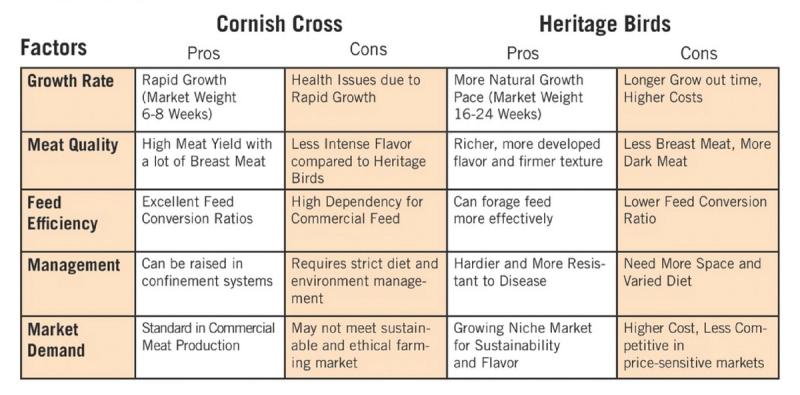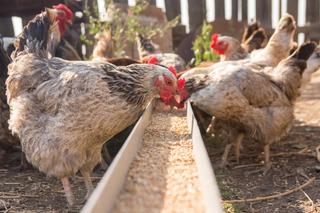From Farm to Table
Unveiling the Journey of Poultry


The journey of poultry from farm to table is a complex and fascinating process that involves careful planning, meticulous care and strict adherence to safety and quality standards. Understanding this journey can give consumers a greater appreciation for the food on their plates and the farmers' efforts to make it possible.
Breeding and Hatching
The journey begins with the careful selection of breeding stock. Farmers choose robust and healthy birds to ensure strong offspring. Eggs are collected and placed in incubators, where they are monitored for temperature and humidity to ensure optimal hatching conditions.
There is not one breed of chicken to select. Farmers or homesteaders can grow different types of birds as meat. The most common is the Cornish Cross, a commercial, faster-growing bird, but heritage birds are also used for meat.
The guide below is a comprehensive exploration of key factors influencing poultry farming. It covers the pros and cons of Cornish Cross and heritage birds, growth rates, meat quality, feed efficiency, management and market demand considerations.

Ultimately, the choice depends on farming goals, resources and market preferences. Many small farmers raise both types to diversify their offerings and meet different market demands.
Brooding and Rearing
Once the chicks hatch, they are moved to a brooder, a warm and controlled environment where they receive their initial food and water during this critical period. Farmers monitor the chicks closely to ensure they are healthy and growing properly.
Growing Out
As the chicks grow, they are moved to larger housing facilities or more land if they are pasture-raised in open fields, where they have more space to roam. It’s a farmer’s choice how they want to raise the birds.
Farmers provide balanced nutrition to promote healthy growth. Depending on the size of the farm, the birds may be raised holistically or on a vaccination program. Regular health checks help prevent disease and ensure the birds' wellbeing.
Pasture Raising Versus Commercialized
Choosing between pasture-raising and commercialized poultry production involves considering animal welfare, environmental impact, cost and meat quality. The choice depends on farming goals, resources, market preferences and personal values.

Above is a detailed analysis of critical factors shaping poultry production, encompassing pasture-raising versus commercialized methods, considerations on animal welfare, environmental impacts, cost-efficiency dynamics, meat quality assessments and consumer appeal insights.
Some farmers may choose to integrate elements of both systems to balance sustainability with productivity.
Processing
When the birds reach the appropriate size, they are transported to a processing facility or processed on the premises if the correct permits are obtained. Strict hygiene and safety standards are followed to ensure the meat is safe for consumption.
After processing, the poultry meat is packaged and labeled. It is then sold to consumers right off the farm and distributed to retailers, restaurants and other outlets. Throughout this process, temperature control is crucial to maintaining the quality and safety of the meat.
Understanding Local Regulations
Regulations and permitting requirements vary widely depending on the location. Small farmers should start by understanding the local, state and federal regulations that apply to their specific type of farming operation. This often involves getting a mentor or contacting local agricultural extension offices, regulatory agencies or farming associations for guidance.
Finally, the meat reaches the consumer. Whether it’s purchased at the grocery store, enjoyed at a restaurant or directly picked up from the local farmer, consumers can enjoy fresh, high-quality poultry, knowing the care and effort that went into bringing it to their plates.
Farmers, processors and distributors adhere to strict standards and regulations throughout the farm-to-table process to ensure the quality and safety of the poultry. This includes biosecurity measures to prevent disease, proper handling and transportation practices and regular inspections and audits.
The journey of poultry is a testament to the dedication and hard work of those involved in the poultry industry. By understanding this process, consumers can make informed choices and appreciate the high-quality products on their table.
Tags:Poultry Lifestyle

Acreage Life is part of the Catalyst Communications Network publication family.













